Operating Experience of Low-Level Waste Handling, Processing, Storage and Transportation Capabilities

AUTHOR
Nicolas Guibert
Orano TN
PRESENTED
Feb. 28, 2023
Waste Management Symposia
ABSTRACT
This paper presents technology advancements and their application to expand nuclear materials transport capabilities and waste management to achieve safety, functional, and cost-efficiency goals. It will also present some recent and relevant Operating Experience to illustrate various applications.
The international advancement of technologies concerning dry storage systems for radioactive materials and the transport services for various radioactive materials will be discussed, including unique Low Level Waste packaging and transportation capabilities. The range of improvements in safety and cost savings for the users and waste generators created by these new capabilities are examined. The paper will describe how the equipment is implemented and the benefits gained, including flexibilities in the segmentation processes or the optimization of disposal volumes on the back end.
The paper will explore the unique set of equipment and services capabilities developed with waste generators across the United States, including:
TABLE I. TN-RAM and MP197HB Specifics 
The MP197HB transport package has been designed and licensed to support the transport of TN Dry Shielded Canisters (DSC) loaded with pressurized water reactor (PWR) or boiling water reactor (BWR) used nuclear fuel (UNF), including high burnup fuels. Due to its excellent shielding capabilities, this package is also licensed to transport LLW such as class A, B, C or Greater Than Class C (GTCC) waste as defined in the United States by 10 CFR 61 [3]. The transport of LLW using the MP197HB and the NUHOMS technology (summarized on Fig. 2) was implemented successfully in 2020 in support of the Vermont Yankee accelerated decommissioning project. The MP197HB is loaded utilizing the standard NUHOMS equipment and transfer process similar to what is currently used for the placement of DSCs loaded with Used Nuclear Fuel into the horizontal storage modules.
The NUHOMS technology uses Dry Shielded Canisters to provide a safe containment, criticality control, thermal exchanges and axial shielding along with Horizontal Storage Modules (HSM) for onsite interim storage of Used Nuclear Fuel on reactor sites. In addition to its excellent performances and decades of proven safety excellence, the NUHOMS technology minimizes the number of handling operations leading to fewer handling steps in comparison with other technologies. The transfer and transport operations do not require the lifting of a loaded Rad Waste Canister (RWC) or Dry Shielded Cansiter (DSC), eliminating the risks associated with dropping and stackups. Refer to Fig. 2 and Fig. 3.
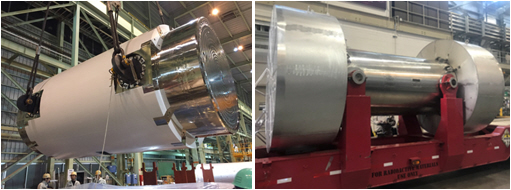
Fig. 1. Pictures of the MP197HB and TN-RAM Type B transport casks
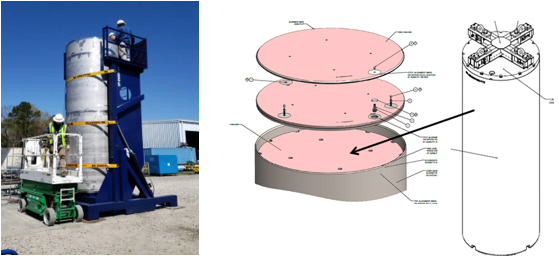
Fig. 2. Bolted Lid RWC-DD Canister in Preparation Before loading and Welded Lid RWC-WA Canister with Removable Internal Liner.
Waste disposal: The RWC is the largest disposal liner transportable in a Type B package and commercially available in the United States today. The RWC has been approved for disposal at the Waste Control Specialists (WCS) disposal facility and uses the new Modular Concrete Containers (MCC) for final disposition. In this process, the RWC is hydraulically pushed from the MP197HB into the disposal module, the same way as the RWCs or DSCs are loaded into HSMs at the origin site. The NUHOMS technology enables the efficient transfer of the RWC into the disposal module without the need to lift the RWC and provides the necessary radiological protection at every step of the process. The large dimensions of the RWC cavity also allow optimization of the packing as a result of the larger curve radius.
The RWCs associated with the MP197HB transport package provide a very capacitive waste storage, transportation and disposal solution commercially available to the waste generators today in terms of volume and activity content.
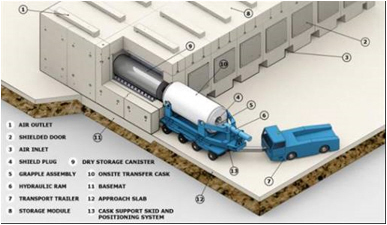
Figure 3: The NUHOMS® dry storage technology
This approach has been broadly implemented for the Greater than Class C (GTCC) waste that are co-located on ISFSI. It is also implemented on sites that have the capability to store class B/C waste and are not willing to send to disposal before some time. An efficient way of storing on site is to place the RWC in dedicated Horizontal System Modules (HSM) or alike.
The field operations are supported by the highly qualified TN services team that are trained and experienced to support the NUHOMS transfer operations, the underwater waste processing operations and the preparation of the cask prior to offsite transportation. This unique combination of skills allows an optimization of the projects resources and costs. This organization also brings agility in the project execution and therefore improves the adaptation to the specifics of each site. The people are trained to the TN specific procedures and can be trained to the site specific ones as needed. Also, sites can elect to implement composite teams involving sites operators along with TN personnel.
TN has been involved in the decommissioning of reactor sites for many decades. Among other activities, the loading of GTCC waste has been or is in the process of being loaded into TN’s RWCs at six (6) different sites in the United States, including very recently the Crystal River site. These RWC are transportable off site to disposal or centralized storage as soon as a receiver site is authorized to accept GTCC waste. TN is able to provide the assurance that the GTCC waste loaded in TN storage systems on site (and class A, B/C waste too) are already transportable offsite in the existing transport package, and can be received at a waste disposal site, once authorized, for example.
In order to maximize the volume of waste loaded into each disposal liner, including the large RWC, and subsequently minimize the disposal costs, the irradiated hardware needs to be efficiently compacted.
In keeping with ALARA principles, this work is performed underwater minimizing personnel radiation exposure and the spread of contamination. The primary use for this equipment is for cutting/compaction of control rod blades (CRB) and fuel channels. The approach used by TN requires not more than two cuts on the blades (removal of the velocity limiters) and allows full length blade or channels compaction with minimal disruption of the pool water. Sheaths are used on the CRBs to minimize spring back after compaction and prevent the transfer of contamination to the processing equipment. Examples of the underwater waste volume reduction equipment for the Control Rod Blades is shown in Fig.4.

Fig. 4: Underwater Waste Volume Reduction Equipment for the Control Rod Blades (Compactor, Velocity Limiter Punch and Sheaths).
Other examples of additional services that are routinely offered in support of the loading operations:
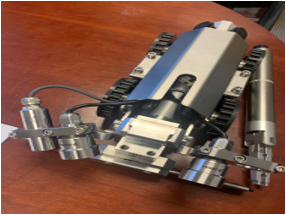
Fig. 5. Underwater Rover Used for Under-Rack Inspections.
These transports are typically Category 1 or 2 Quantities of Radioactive Materials as specified in 10 CFR 37 [4] and have been conducted by rail. The highly experienced U.S. TN transportation team established new, effective procedures for organizing rail transports and to handle the specific physical protection requirements and tracking for the transport of Category 1 and Category 2 Quantities of Radioactive Materials, including 24/7 monitoring of the transports with the TN movement control Center (MCC) when required. A very important, and unique, coordination work has been done by TN in the planning and execution phases of the shipments, involving directly the regulators, four different rail carriers, twelve (12) States and Tribal governments along with the States regional groups for each of the transports between Vermont and Texas.
The transport of LLW in Type B packages by rail has been successfully demonstrated by the ongoing Vermont Yankee project. This effort allowed TN to gain a higher level of technical expertise in the rail transport of radioactive material and the organization required for these very specific transport projects. This has also been an opportunity for all the stakeholders involved in these transports, such as the Department of Transportation, the Federal Rail Administration, the States and Tribal governments, and the railroads, to name the main ones, to acquire unique operational experience, in preparation for the future transport of used nuclear fuel.

Figure 6: A loaded MP197HB ready to leave Waste Control Specialists in West Texas for the next shipment
These transports also provided a validation to some of the steps that will be followed for the future transports of used nuclear fuel with a few major differences that can be summarized as follows :
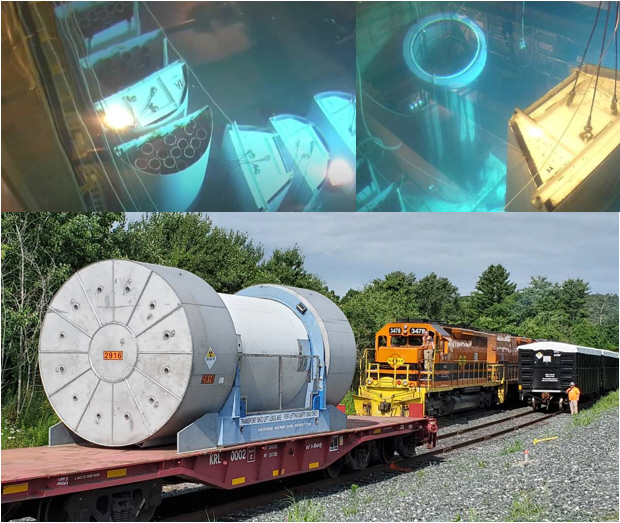
Fig. 7. Illustrations of the RWC Loading at Vermont Yankee and MP197HB Departure from the Site in 2020-2021.
The noteworthy conclusions of this campaign were:
The technical approaches presented here can be implemented at a smaller scale using the inserts with a shielded bell for site with very limited lifting capabilities. It can also be implemented at a larger scale with the use of the RWC.
The technologies described in this paper apply to the storage, transport and disposal of all types of LLW, including GTCC waste, and other types of waste within the United States or internationally. Most of the transport equipment listed here can also be used for high level waste and used nuclear fuel.
TN is also developing a larger capacity EOS® Dry Shielded Canister for optimized interim storage of UNF. The newest transportation package, TN Eagle, is being developed as a new international transport package for all the TN DSCs, including the EOS canisters and is currently undergoing review by the United States Nuclear Regulatory Commission to authorize the transport of UNF. The TN Eagle will be the next addition to the fleet of Type B transport packages. The design of the TN Eagle (Figure 8) presents multiple major innovations in terms of performance and fabrication standardization and is designed to meet to the latest standards and international regulatory requirements. The TN Eagle is envisioned to be also used to transport LLW in existing or future RWC designs.
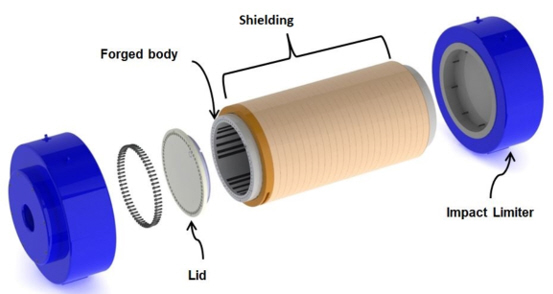
Figure 8: The new TN EAGLE package for the future EOS canister transports
Nicolas Guibert
Orano TN
PRESENTED
Feb. 28, 2023
Waste Management Symposia
ABSTRACT
This paper presents technology advancements and their application to expand nuclear materials transport capabilities and waste management to achieve safety, functional, and cost-efficiency goals. It will also present some recent and relevant Operating Experience to illustrate various applications.
The international advancement of technologies concerning dry storage systems for radioactive materials and the transport services for various radioactive materials will be discussed, including unique Low Level Waste packaging and transportation capabilities. The range of improvements in safety and cost savings for the users and waste generators created by these new capabilities are examined. The paper will describe how the equipment is implemented and the benefits gained, including flexibilities in the segmentation processes or the optimization of disposal volumes on the back end.
The paper will explore the unique set of equipment and services capabilities developed with waste generators across the United States, including:
- volume reduction of packaged waste,
- fabrication of a new line of Rad Waste Containers compatible with existing NUHOMS® technology, greater capacity Type B transport packages and disposal installations,
- fleet of US Nuclear Regulatory Commission (NRC) certified Type B transport packages (MP197HB®, TN-RAM),
- organization of offsite transports of Category 1 or 2 Quantities of Radioactive Materials by rail across the United States. A focus will be put on the safe shipment by rail of a Type B transportation cask and its very specific transport protocols
such as: the successful interaction and coordination with stakeholders along the transport corridor for the shipment of this cask, the optimization of the routing of the railcar shipping this cask, and the demonstration of some loading and unloading
operations involving this cask.
- onsite storage of Greater Than Class C waste. Insights on how the technology applies to the storage, transport and disposal of all types of Low-Level Waste, including Greater Than Class C waste (GTCC) in the United States will be discussed.
- The transport of very large irradiated components and their packaging with a discussion on the challenges and solutions will be touched on.
- other underwater services such as waste processing, under rack inspections, and specialty segmentation.
INTRODUCTION
With the rapid changes in the needs for transportation to support the waste generators and the adaptation to the waste disposal capabilities, new approaches have been taken in an effort to be more capacitive and make the operations more efficient. This paper will present some of the initiative taken to support the industry.FLEET OF TRANSPORT PACKAGES AND RAD WASTE CONTAINERS
TN developed a fleet of Type B transport packages to support transports of radioactive materials. In the US, TN owns and operates the TN-RAM and MP197HB packages. Both transport packages designs are approved by the United States Nuclear Regulatory Commission (1, 2) for transport in the public domain and have been routinely used for transporting of high activity LLW over the past years. (Fig.1)
The MP197HB transport package has been designed and licensed to support the transport of TN Dry Shielded Canisters (DSC) loaded with pressurized water reactor (PWR) or boiling water reactor (BWR) used nuclear fuel (UNF), including high burnup fuels. Due to its excellent shielding capabilities, this package is also licensed to transport LLW such as class A, B, C or Greater Than Class C (GTCC) waste as defined in the United States by 10 CFR 61 [3]. The transport of LLW using the MP197HB and the NUHOMS technology (summarized on Fig. 2) was implemented successfully in 2020 in support of the Vermont Yankee accelerated decommissioning project. The MP197HB is loaded utilizing the standard NUHOMS equipment and transfer process similar to what is currently used for the placement of DSCs loaded with Used Nuclear Fuel into the horizontal storage modules.
The NUHOMS technology uses Dry Shielded Canisters to provide a safe containment, criticality control, thermal exchanges and axial shielding along with Horizontal Storage Modules (HSM) for onsite interim storage of Used Nuclear Fuel on reactor sites. In addition to its excellent performances and decades of proven safety excellence, the NUHOMS technology minimizes the number of handling operations leading to fewer handling steps in comparison with other technologies. The transfer and transport operations do not require the lifting of a loaded Rad Waste Canister (RWC) or Dry Shielded Cansiter (DSC), eliminating the risks associated with dropping and stackups. Refer to Fig. 2 and Fig. 3.

RAD WASTE CANISTERS (RWC)
When the TN-RAM liners are not sufficient or large pieces need to be transported, the RWC is typically used as a large liner that can handle waste using multiple designs to accommodate different types of underwater operations:- Bolted or welded lid: Depending on the functional specification of the waste and need for on-site dry storage or direct transport, TN can provide a welded liner RWC, similar to a TN DSC enclosure. If there is a need to partially load a RWC over a
longer period of time, a bolted lid would be more appropriate and provides the advantage of interim storage as new waste is generated; keeping in mind the external surface is never contaminated.
- A secondary liner or basket is another option which allows processing and packaging of the waste in the pool and storing it underwater until such time as the RWC and transfer cask is ready for use (Fig.2). This secondary liner provides flexibility
during the segmentation operations and schedule by allowing an additional storage buffer.
- The very large dimensions of the RWC (> 400 cubic feet - 11.3 m3), in comparison with the typical containers currently in use (~50 cubic feet – 1.4 m3), allows the loading of larger parts, giving more flexibility on the segmentation plans
and significantly reducing the number of underwater cutting operations and transports.
- Variable radial and axial thicknesses to provide extra shielding

Waste disposal: The RWC is the largest disposal liner transportable in a Type B package and commercially available in the United States today. The RWC has been approved for disposal at the Waste Control Specialists (WCS) disposal facility and uses the new Modular Concrete Containers (MCC) for final disposition. In this process, the RWC is hydraulically pushed from the MP197HB into the disposal module, the same way as the RWCs or DSCs are loaded into HSMs at the origin site. The NUHOMS technology enables the efficient transfer of the RWC into the disposal module without the need to lift the RWC and provides the necessary radiological protection at every step of the process. The large dimensions of the RWC cavity also allow optimization of the packing as a result of the larger curve radius.
The RWCs associated with the MP197HB transport package provide a very capacitive waste storage, transportation and disposal solution commercially available to the waste generators today in terms of volume and activity content.
ON SITE STORAGE
Similarly to what the Dry Shielded Canisters do with used nuclear fuel, the RWC can be used to store temporarily radioactive waste onsite along with the UNF or at a separate waste storage location. If needed, the RWC can be used to provide additional shielding, particularly for storage purposes. Today, the RWCs are transportable in the MP197HB® with a payload of up to 70,000 Ci (2590 TBq) Co-60 equivalents. The RWC can be loaded with much higher activity waste content for onsite storage, until the waste inventory decay reaches the transportable threshold. To illustrate, we are loading a RWC with an inventory in the range of approximately 350,000 Ci (~13 000 TBq) Co-60 eq/ per RWC and it will be stored until decayed to transportable limits. The maximum amount of activity will depend on each site’s boundary dose rate evaluation. The RWCs are stored onsite in concrete NUHOMS Horizontal Storage Modules (HSM) (Figure 3).
This approach has been broadly implemented for the Greater than Class C (GTCC) waste that are co-located on ISFSI. It is also implemented on sites that have the capability to store class B/C waste and are not willing to send to disposal before some time. An efficient way of storing on site is to place the RWC in dedicated Horizontal System Modules (HSM) or alike.
The field operations are supported by the highly qualified TN services team that are trained and experienced to support the NUHOMS transfer operations, the underwater waste processing operations and the preparation of the cask prior to offsite transportation. This unique combination of skills allows an optimization of the projects resources and costs. This organization also brings agility in the project execution and therefore improves the adaptation to the specifics of each site. The people are trained to the TN specific procedures and can be trained to the site specific ones as needed. Also, sites can elect to implement composite teams involving sites operators along with TN personnel.
TN has been involved in the decommissioning of reactor sites for many decades. Among other activities, the loading of GTCC waste has been or is in the process of being loaded into TN’s RWCs at six (6) different sites in the United States, including very recently the Crystal River site. These RWC are transportable off site to disposal or centralized storage as soon as a receiver site is authorized to accept GTCC waste. TN is able to provide the assurance that the GTCC waste loaded in TN storage systems on site (and class A, B/C waste too) are already transportable offsite in the existing transport package, and can be received at a waste disposal site, once authorized, for example.
WASTE PROCESSING
One of the new capabilities is the association of the large handling and transport capacities with highly efficient volume reduction equipment. The unique set of waste minimization capabilities and waste compaction equipment owned and operated by TN is geared toward making the on-site and transport operations as safe and simple as possible for the users. Significant improvements are provided in terms of operations, disposal volume optimization, and flexibility in the segmentation processes, dose savings and cost efficiencies. The equipment is supplemented by a number of additional services that expand the range of services proposed along with the transport services.In order to maximize the volume of waste loaded into each disposal liner, including the large RWC, and subsequently minimize the disposal costs, the irradiated hardware needs to be efficiently compacted.
In keeping with ALARA principles, this work is performed underwater minimizing personnel radiation exposure and the spread of contamination. The primary use for this equipment is for cutting/compaction of control rod blades (CRB) and fuel channels. The approach used by TN requires not more than two cuts on the blades (removal of the velocity limiters) and allows full length blade or channels compaction with minimal disruption of the pool water. Sheaths are used on the CRBs to minimize spring back after compaction and prevent the transfer of contamination to the processing equipment. Examples of the underwater waste volume reduction equipment for the Control Rod Blades is shown in Fig.4.

Other examples of additional services that are routinely offered in support of the loading operations:
- Waste characterization
- Pool cleanout
- Under-rack camera inspection and retrieval of remaining special nuclear material or waste
- Fuel racks cleaning and packaging
- GTCC waste segmentation (top nozzle Inconel springs punching for instance)
- Underwater cutting of local power range monitors (LPRMs)
- Fuel channels underwater compacting and cutting

RAIL TRANSPORTATION SERVICES
Orano TN is organizing on average 350 transport of radioactive material in the United States annually on all modes of transportation. Although often seen as a difficult mode of transportation to handle radioactive material with time sensitive or security concerns, rail has been added to the list of TN capabilities these last few years. Orano TN has supported Orano Decommissioning Services (ODS) since 2019 in the Vermont Yankee reactor vessel and internals segmentation operations and associated transport services. Overall, seven (7) shipments of segmented reactor vessel internals to the disposal site in West Texas have been completed using Orano’s MP197HB. The radioactive waste transported in this cask were segments of activated metal requiring the shielding and containment of a Type B transport cask. The transports were conducted in a collaborative and transparent approach with the Vermont Yankee site owner and licensee, NorthStar, and all the transportation stakeholders.These transports are typically Category 1 or 2 Quantities of Radioactive Materials as specified in 10 CFR 37 [4] and have been conducted by rail. The highly experienced U.S. TN transportation team established new, effective procedures for organizing rail transports and to handle the specific physical protection requirements and tracking for the transport of Category 1 and Category 2 Quantities of Radioactive Materials, including 24/7 monitoring of the transports with the TN movement control Center (MCC) when required. A very important, and unique, coordination work has been done by TN in the planning and execution phases of the shipments, involving directly the regulators, four different rail carriers, twelve (12) States and Tribal governments along with the States regional groups for each of the transports between Vermont and Texas.
The transport of LLW in Type B packages by rail has been successfully demonstrated by the ongoing Vermont Yankee project. This effort allowed TN to gain a higher level of technical expertise in the rail transport of radioactive material and the organization required for these very specific transport projects. This has also been an opportunity for all the stakeholders involved in these transports, such as the Department of Transportation, the Federal Rail Administration, the States and Tribal governments, and the railroads, to name the main ones, to acquire unique operational experience, in preparation for the future transport of used nuclear fuel.

These transports also provided a validation to some of the steps that will be followed for the future transports of used nuclear fuel with a few major differences that can be summarized as follows :
- For practical reasons, site operations employed as much of the available onsite infrastructure as possible, such as the turbine building crane. It can be reasonably expected that when commercial UNF will be transported offsite for disposal or storage
in the United States, many sites will have already been decommissioned and there will be no such infrastructure left on the site. Other options would be used to support these operations.
- A standard Heavy Duty railcar suitable for the transport of a 140-ton cask was used for the LLW shipments. However, the DOE and American Association of Railroads (AAR) are currently prescribing the use of an AAR S-2043 complaint rail consist for the
transport of UNF, equipment which is still being developed. Also, the LLW shipments were conducted using regular “merchandise” trains with no escorts, whereas the use of special or “dedicated” trains with an armed escort
would be required for the transport of UNF.
- The Vermont Yankee (VY) RWC campaign was completed using only a single cask. For future UNF campaigns, it is expected that a fleet of transport casks would be used to efficiently support the shipment offsite of multiple casks at once on the same consist.
Current plans are assuming three to five casks per train consist with the limitation mainly due to security reasons but could be re-assessed with the use of new security equipment. Using multiple casks per shipment would definitely have favorably
impacted the sequences of onsite operations.

The noteworthy conclusions of this campaign were:
- No delays due to transportation events or incidents
- Coordination and pre-planning activities with States and Tribal Nations were very important and productive
- FRA was very open and helpful in ensuring that shipments were prepared and executed in accordance with regulatory requirements
- New processes developed to interact with railroads
- WCS performed unloading without difficulty
POOL CLEANOUT PROJECTS
TN has been routinely using the TN-RAM transport casks for the past 30+ years and, a few years ago, in combination with waste compacting and processing equipment for improved waste services. The vast majority of the campaigns were in support of BWR reactors, but campaigns were also carried out at PWR sites (top nozzles, fuel racks …) and at Department of Energy (DOE) research sites. The flexibility of the equipment and the efficiency of the operations make the use of the TN-RAM a very robust and proven option (see Table 1). In the last years, TN has carried pool cleanout projects from sites in Iowa, New Jersey, Mississippi, Tennessee for instance. When higher volume of waste needs to be processed, TN can propose the RWC with the MP197HB to take advantage of the higher volume and activity capacity, the same way as it was done at Vermont Yankee for instance.The technical approaches presented here can be implemented at a smaller scale using the inserts with a shielded bell for site with very limited lifting capabilities. It can also be implemented at a larger scale with the use of the RWC.
FUTURE DEVELOPMENTS
Orano TN continues to develop the portfolio of techniques and equipment to better serve the nuclear industry’s needs. The innovations implemented are aimed at increasing the efficiency and reducing the costs to support even more complex decommissioning and clean-out projects.The technologies described in this paper apply to the storage, transport and disposal of all types of LLW, including GTCC waste, and other types of waste within the United States or internationally. Most of the transport equipment listed here can also be used for high level waste and used nuclear fuel.
TN is also developing a larger capacity EOS® Dry Shielded Canister for optimized interim storage of UNF. The newest transportation package, TN Eagle, is being developed as a new international transport package for all the TN DSCs, including the EOS canisters and is currently undergoing review by the United States Nuclear Regulatory Commission to authorize the transport of UNF. The TN Eagle will be the next addition to the fleet of Type B transport packages. The design of the TN Eagle (Figure 8) presents multiple major innovations in terms of performance and fabrication standardization and is designed to meet to the latest standards and international regulatory requirements. The TN Eagle is envisioned to be also used to transport LLW in existing or future RWC designs.

CONCLUSION
TN continues implementing new equipment and techniques combining the largest capacity storage and transport technologies with highly efficient and proven waste compacting processes. Besides this flexibility, this approach provides also significant costs and safety benefits from using highly capacitive transports and optimized waste volume reduction to the projects.REFERENCES
- United States Nuclear Regulatory Commission, TN-RAM NRC certificate of Compliance USA/9233/B(U)-96, January 6, 2021.
- United States Nuclear Regulatory Commission, MP197HB NRC certificate of Compliance USA/9302/B(U)F-96, December 18, 2019.
- United States Code of Federal Regulations, 10 CFR 61, Licensing Requirements for Land Disposal of Radioactive Waste (2021.)
- United States Code of Federal Regulations, 10 CFR 37, Physical Protection of Category 1 and 2 Quantities of Radioactive Material (2021).
RESOURCES
Orano's Nuclear Transport and Logistics
>> Return to Orano White Papers
